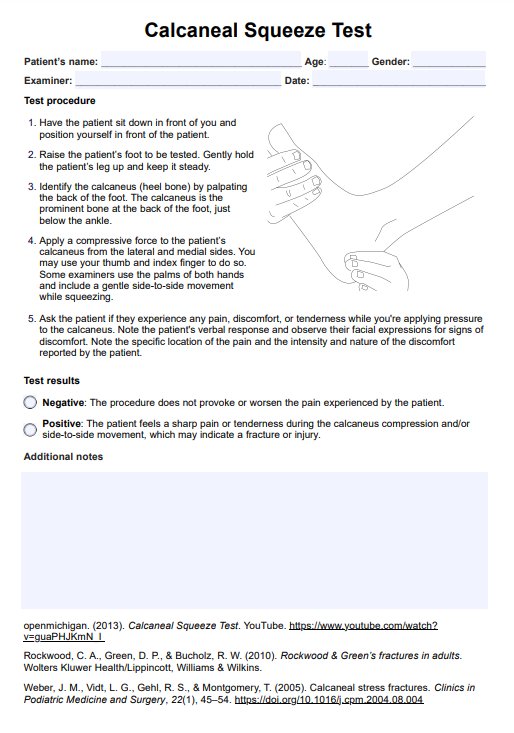The special test commonly used to assess for a calcaneal fracture is the Calcaneal Squeeze Test, where gentle compressive force is applied to the sides of the heel to elicit any pain that may indicate a fracture or injury.

Calcaneal Squeeze Test
Determine whether your patient's heel pain is caused by a stress fracture. Use our free Calcaneal Squeeze Test template for easy and consistent testing.
Calcaneal Squeeze Test Template
Commonly asked questions
A positive Calcaneal Squeeze Test result, marked by intense pain during heel compression, may suggest the presence of a calcaneal stress fracture or other injury, indicating the need for further diagnostic evaluation.
Diagnosing a stress fracture typically involves a combination of physical examinations, such as the Calcaneal Squeeze Test, along with imaging tests like X-rays, MRI, or bone scans, which provide detailed views of bone integrity and any fractures.
EHR and practice management software
Get started for free
*No credit card required
Free
$0/usd
Unlimited clients
Telehealth
1GB of storage
Client portal text
Automated billing and online payments











